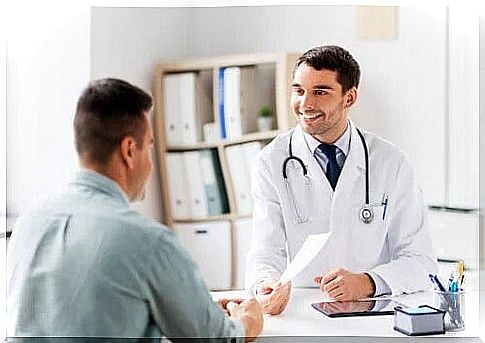What Is Therapeutic Adherence?

The theme of therapeutic adherence is of great importance. The success of a treatment largely depends on it. The topic is quite complex since there are many factors that affect this situation.
In fact, the first difficulty is that there is no consensus on the definition of therapeutic adherence. Some health professionals see it simply as complying with prescriptions. Others, on the other hand, see it as a multifactorial phenomenon.
Furthermore, the causes and consequences of non-adherence to therapy are multiple. This means that each case is different. For this reason, it is not easy to understand or approach this phenomenon. So let’s see the problem step by step.
What is therapeutic adherence

Therapeutic adherence is the patient’s active and voluntary commitment to the treatment indicated by the health professional. Your goal is to achieve a specific result. Such commitment must be agreed between the patient and the physician.
Therapeutic adherence refers to a set of behaviors. From the patient’s perspective, it includes acceptance of the treatment plan and effective practice of the indications. It also includes avoiding risky behaviors and incorporating lifestyles consonant with the therapeutic purpose.
From the physician’s perspective, it means the ability to establish a positive alliance with the patient. The practitioner must give him clear directions, making sure they are understood. At the same time, it must motivate the patient so that their adherence to the treatment is voluntary.
Factors influencing therapeutic adherence

There are many factors that could promote a benefit, however, on the contrary, they hinder therapeutic adherence. Among the main ones are:
- Physician/patient interaction : refers to the quality of the bond. When it is positive, adherence is usually greater. The essential factor is communication. The clearer and more motivated the nominations, the better.
- The therapeutic regimen : the most influencing elements are the complexity of the dosage and the side effects of the treatment. Single-dose treatments are, of course, the easiest to adhere to. On the other hand, the greater the side effects, the greater the difficulties.
- Characteristics of the disease : when treatment quickly relieves the disturbing symptoms, there is greater adherence to therapy. Asymptomatic patients, on the other hand, are those with a weaker therapeutic adherence.
- Psychosocial factors : beliefs, attitudes, lifestyle and values are factors that facilitate or hinder adherence. The patient’s perception of the effectiveness of the treatment and the physician is of particular importance.
- The environment : if the patient receives support from their social environment, it will be easier to follow the medical instructions. Aspects such as religion and the family’s attitude towards health sometimes play a major role.
Consequence of therapeutic non-adherence
The lack of therapeutic adherence causes multiple consequences, mainly clinical and economic. However, it is a difficult aspect to measure and analyze. Most patients avoid commenting on their transgressions. Patients are often not completely sincere.
The clinical consequences depend on the type of non-compliance of the patient. Sometimes the treatment is never started, while at other times it is stopped after it has started. The effects of this will depend, among other factors, on the disease and condition of the patient.
In general, lack of adherence also leads to an increase in the cost of healthcare. It causes an increase in the number of hospitalizations and visits to health centers and the emergency room. It can also lead to changes in prescriptions and an increased need for diagnostic tests.
How to achieve greater therapeutic adherence?

There are currently many ongoing researches related to the development of strategies to achieve greater therapeutic adherence. Although a conclusion on this topic has not yet been defined, generally the following measures are recommended:
- Simplify the prescription regimen as much as possible : the fewer doses and fewer drugs prescribed, the easier it will be to achieve patient compliance.
- Behavioral influence : comprises actions to model the behavior of patients in treatment. Includes reminders, follow-ups, rewards etc.
- Educational aspects : the patient must not only know what to take and when to take it, but also why it is important to do so. This makes it easy for him to voluntarily follow the prescribed regimen without any pressure.
- Family and social support : includes actions aimed at providing social support, such as home care, management of help for spending on medicines, etc. In addition, interventions in the social environment so that their participation is greater.
- Training of health professionals: this is necessary, especially with regard to learning communication and motivation techniques.
All these strategies must be applied in a simultaneous and coordinated manner.









